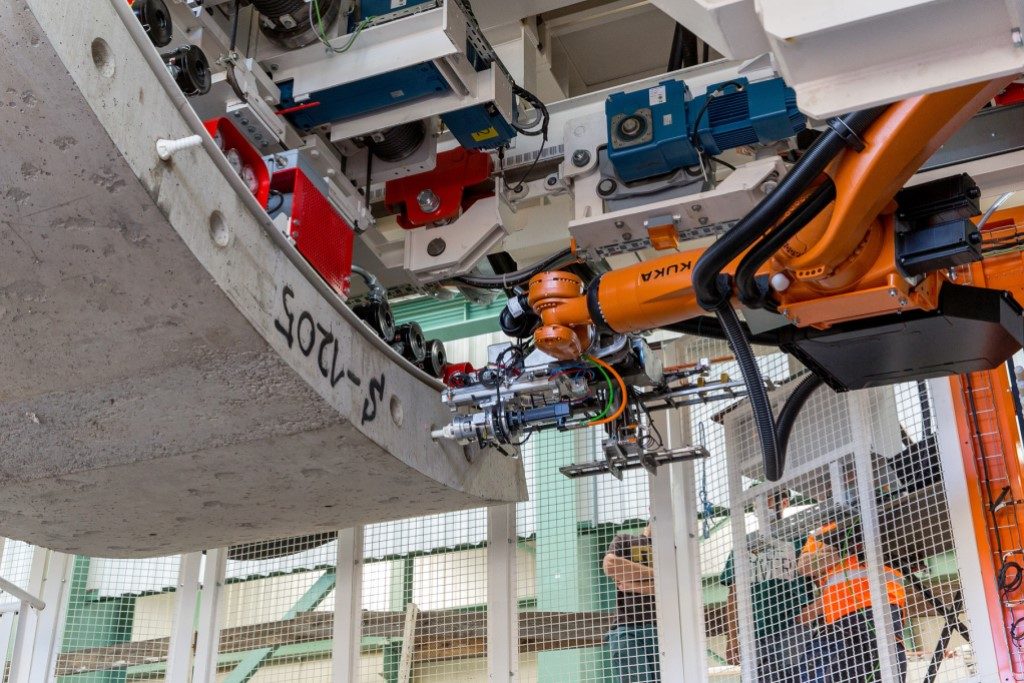HS2 is set to deploy a robot arm to automate two risky tasks during tunnelling work on the rail megaproject.
The robot, dubbed Krokodyl, has been developed by main works contractor Align, a joint venture between Bouygues, Sir Robert McAlpine and VolkerFitzpatrick. It will be deployed on a pair of 2,000-tonne tunnel boring machines (TBMs) that will excavate HS2’s 10-mile Chiltern tunnels.
Krokodyl’s job will be to remove wooden spacers that separate stacked tunnel segments as they are fed through to the front of the TBM. It will also insert dowels used to link segments together. Both tasks are usually done by hand, bringing inherent risks of working directly with concrete segments weighing up to eight tonnes each.
HS2 says that by automating spacer removal and dowel positioning, the robot “removes the need for people to work in this potentially hazardous area”.
Seven segments need to be moved into place and connected together to complete each tunnel ring. In all, 112,000 are due to be installed to complete the 9.1 metre-diameter tunnels. The two 170 metre-long TBMs are expected to take three years of non-stop work to delve through the chalk and flint below the Chilterns.
Align underground construction director Didier Jacques said safety is a priority throughout HS2’s supply chain: “A lot of work has been undertaken by all concerned that has enabled us to develop and introduce this robot, thereby reducing the risk to our personnel.”
He added: “We are very proud of these innovations, which we would be happy to share with tunnelling teams working on other projects across the world, to help reduce the likelihood of accidents and injuries.”
Robots are increasingly being deployed to reduce risks to construction workers. Last year, Sisk began trials of a robot designed to assist human bricklayers by removing the manual strain of lifting blocks. A robotic dog for gathering survey data on dangerous sites could be available in the UK in 2021.
 Construction News Read UK Construction Industry News, Analysis, Opinion and data
Construction News Read UK Construction Industry News, Analysis, Opinion and data
